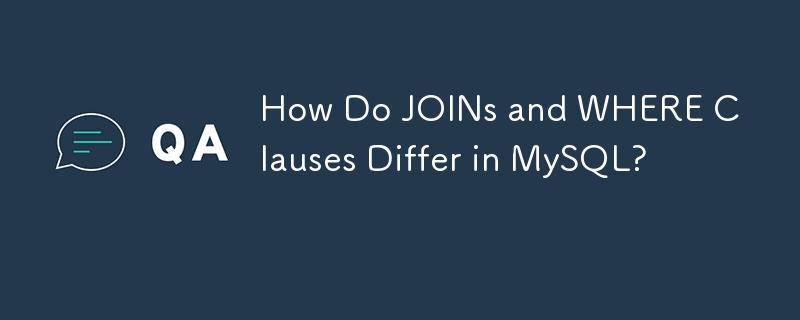

MySQL Join Behavior: Default and Syntax Differences
When performing join operations in MySQL, the default behavior is INNER JOIN. This means that MySQL will only return rows that match in both tables connected by the join condition. The syntax for an INNER JOIN is:
SELECT * FROM t1 INNER JOIN t2 ON t1.id = t2.id
The same result can be achieved using the comma syntax:
SELECT * FROM t1, t2 WHERE t1.id = t2.id
However, it's important to note that the comma syntax is considered legacy and has certain limitations.
When is a JOIN Different from a WHERE Clause?
A JOIN is used to merge rows from multiple tables based on a specified condition, while a WHERE clause filters rows within a table. When using a WHERE clause with multiple tables, such as:
SELECT * FROM t1, t2 WHERE t1.id = t2.id
MySQL performs an implicit INNER JOIN based on the WHERE condition. However, if the WHERE clause is omitted, MySQL will perform a CROSS JOIN, which returns all possible combinations of rows from both tables.
Advantages of Using JOIN Syntax
Compared to the comma syntax, JOIN syntax provides several advantages:
The above is the detailed content of How Do JOINs and WHERE Clauses Differ in MySQL?. For more information, please follow other related articles on the PHP Chinese website!




